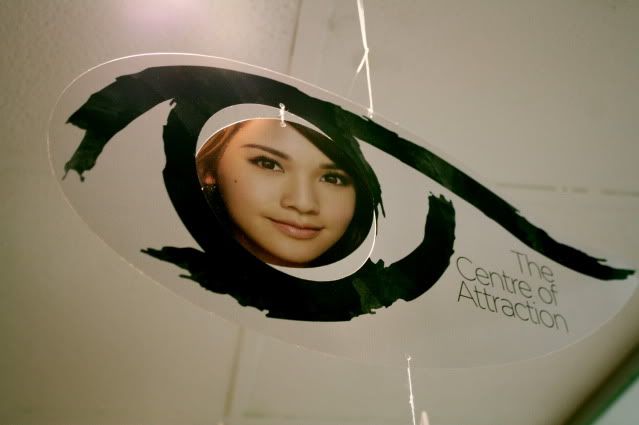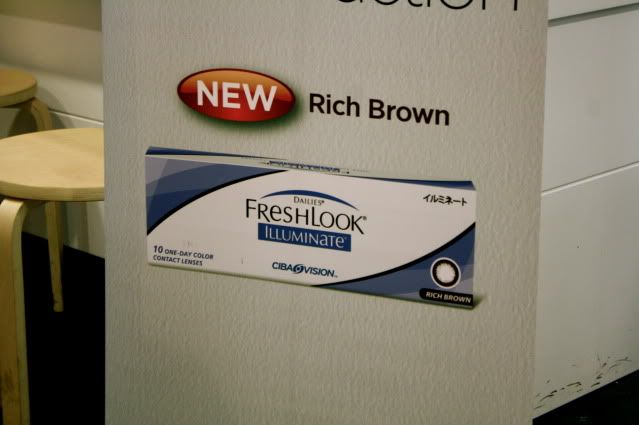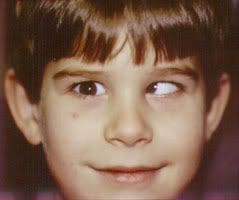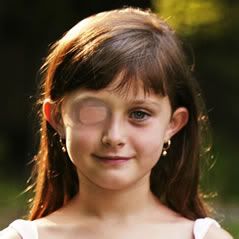Ads By D`EYEWEAR
Saturday, June 16, 2012
Thursday, June 14, 2012
Amblyopia
Amblyopia
Amblyopia (or lazy eye) is the most common cause of poor vision in children. Amblyopia occurs because the part of the brain that deals with vision for that eye has failed to develop normally.
The vision centre in the brain is constantly developing during the first seven to eight years of a child's life. If the vision is interfered with in any way then the brain will start to prefer one eye over the other and the vision in the other eye will suffer. To reverse the process and correct the vision in the poor eye, it is necessary to make the brain use this eye again.
Causes of amblyopia
The most common problem is poor focusing due to myopia (near-sightedness), hyperopia (far-sightedness), or astigmatism (irregularity of the focus).
Child with esotropia
Patching to treat left eye amblyopia
Strabismus will sometimes cause amblyopia. If, for example, there is an in-turning of the eye, and it is always the same eye that turns in, then this eye will become amblyopic.
Visual deprivation
Anything that interrupts the passage of light into the eye, such as a scar on the cornea (surface of the eye), a cataract (an opaque lens in the eye), or a very droopy eyelid can lead to amblyopia.
Treating amblyopia
Treating amblyopia relies on making a child use the poorer eye in order to build the vision up again. Patching is the mainstay of amblyopia treatment. Amblyopia treatment only treats the vision and does not make a turned eye become straight.
Patching
Patching or covering the good eye is the mainstay of amblyopia treatment. Patching can be done fulltime with the patch worn all day every day for a set period or it can be done part time for a certain number of hours a day, depending on the degree of amblyopia. It is easier to treat amblyopia successfully if the treatment is started while the child is young. Beyond the age of five years it becomes increasingly difficult to reverse amblyopia. Beyond seven years it is particularly difficult.
Patching is very hard work for both parents and children. Most children, even in infancy, object to the patch or sometimes simply fall asleep when it is put on.
Tips on patching
- Strategies for keeping the patch on:
If your child is old enough to understand the reason for the patch, then often a simple explanation for why it is necessary will help. A reward system has been found by parents to also be effective. Providing interesting and supervised activities can also act to distract the child from the patch.
If your child continues to struggle with patching, speak to your orthoptist who can give you information about other strategies that may be tried. - Treat skin irritation early:
Some children will experience skin irritation where the patch is attached to the face. This may be due to a minor allergy to the adhesive. Switching tape/patch brands may help eliminate the problem. - Micropore tape or commercial patches:
Usually 5cm Micropore tape is recommended for patching and our orthoptists will be able to provide instructions and tips and tricks for its use. Micropore and commercial patches are available for purchase from Auckland Eye and can be obtained from some chemists. - Wearing glasses:
If your child wears glasses then a patch over the spectacle lens is sometimes useful. The patch has to extend back to the forehead from the top of the glasses and along the side of the frame to ensure the child cannot see around it. Fabric patches, called Patch Pals, are available for purchase from Auckland Eye.
Alternatives to patching
Eye drops: Atropine eye drops can be instilled on a regular basis into the good eye to blur the vision. The drops can be used on their own or in conjunction with glasses and patching. These drops act by relaxing the focusing system of the eye. They also dilate the pupil and can make the eye light sensitive. These drops will work only for certain degrees of amblyopia as they rely on blurring the good eye enough to make it worse than the amblyopic one. The drops can be given every day or just twice a week depending on your child's eyesight.
Don't give up too soon: If the treatment is proving impossible then it is reasonable to have some time out for a few weeks before trying again. As long as the child is still young there should be time to reverse the amblyopia. There are occasionally times when amblyopia treatment doesn't work and you may have to accept that one eye will always be poorer than the other, but it is always reassuring to know that you have done everything possible to treat it.
Subscribe to:
Posts (Atom)







